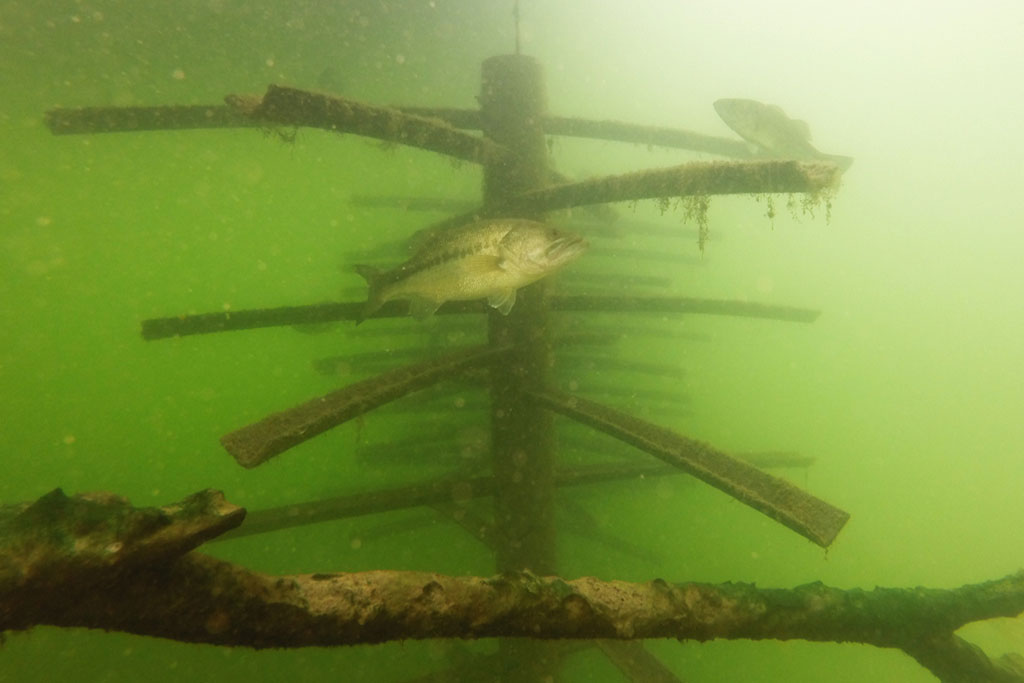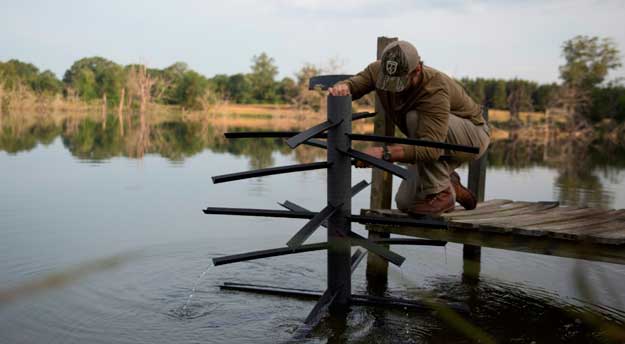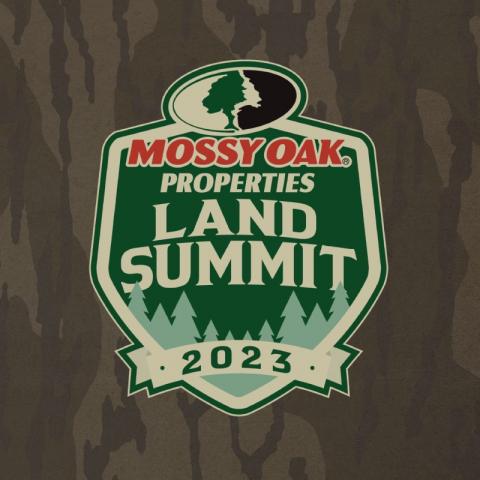
Phillip Gentry
The practice of placing structure for fish has come a long way in the last 30 years. Pretty much anyone who has ever watched a bobber while sitting on the end of a pier or boat dock is familiar with the practice of tossing recycled Christmas trees with concrete blocks attached over the side to create that personal fishing hole.
While using natural materials such as old Christmas trees and loped off tree limbs and placing them in the waters edge is still a good practice, the science of habitat creation has come a long way.
Whether in natural or manmade bodies of water, the placing aquatic habitat is more important now than ever as water edges that used to create natural habitat by way of tree limbs and even entire trees and rocks falling into the water are being developed leaving relatively anything of use to the aquatic environment behind.
Shop Now: Biologic's Perfect Pond Plus Fertilizer
Structure is Beneficial to the Entire Food Chain
The entire food chain from predator fish to forage fish, mollusks and invertebrates, algae and plankton, and on down to microscopic creatures that most of us never think of all benefit from having hard substrate to orient or attach to in the water. Structure is the anchor that holds many of these creatures in place as well as providing them a place to call home either on the long term or for at least one period of their lives.
As microscopic creatures such as algae and plankton attach to aquatic structure, larger species – shrimp, crayfish, and minnows are drawn to the area to feed. This in turn attracts the larger predator species that are of interest to the angler.
Fisheries management research has shown that aquatic species are just as attracted to man-made fish habitat as they are to the natural stuff. This is probably due in part to the materials now being used to create such habitat.
In days gone by, old Christmas trees and brush tops worked fine for creating fish habitat but rarely lasted as usable fish holding and spawning structure for more than a couple of years. This is fine so long as that structure was replenished every year or two but does little in the long term for the benefit of the fish.
Where to Put Fish Structures
There is never a bad place to place fish habitat, unless it obstructs boating or other human traffic, but some areas are better than others. To understand where to plant fish attracting structure consider what anglers call break lines.
Break lines are the edges of natural channels, creeks, or rivers on the lake floor. Fish use these break lines as travel routes, similar to how humans use roads. Planting fish structure on or just adjacent to a break line is like a rest stop along a busy highway and will see a lot of traffic.
On the other hand, there are flats. Think of a flat as a neighborhood. It can be a shallow flat, a mid-depth flat or even a deep water flat. On its own, it may be fairly devoid of life but like a neighborhood, once houses start popping up, residents will move in and an entire aquatic neighborhood can be created.
Shop Now: Mossback Fish Habitat Structures
Materials for Fish Structure

While wood has long been the standard for creating artificial aquatic habitat, that material has started to give way to longer lasting materials such as concrete, recycled plastics and other composite materials.
Since wood will rot over time, although usually much slower if not exposed to air, concrete and other materials will last for hundreds of years and rarely succumb to decomposition.
When plastics such as PVC were first designed for aquatic habitat, it was discovered that it took much longer for marine animals to attach to the smooth surfaces of the materials. These days many manufacturers of fish attractors use materials with rough surfaces to give aquatic life a foothold to attach to.
Configurations of structure is also important to allow areas of tight structure to hold smaller species and larger openings in the structure for larger fish to use. Typically structure that spans from the bottom of the lake to the surface is not as usable by fish as structure that extends one third or at most, one half the overall water depth. This allows for an open area above the structure which fish frequently use to suspend above the cover.
Although there are some differences between planting food plots and leaving edge habitat on land for the benefit of wildlife and creating aquatic habitat for marine species, the benefit of creating habitat, be it bird, mammal, fish or some microscopic creature we’ll probably never lay eyes on, is continued renewal of the resource, giving back more than what you take.






























